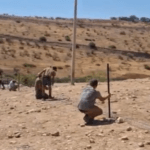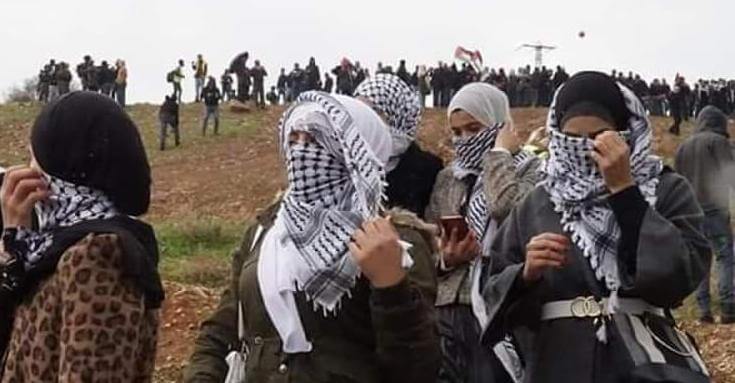Resistance in Fasayil al-Fauqa 2011

You can view photos here
Fasayil is a Palestinian village sandwiched between two Israeli agricultural settlements. Tomer has a population of 293, was established in 1983 and controls 366,000m2. Paza’el has a population of 215, was established in 1975 and produces grapes and flowers for export.
The village can be divided in 3 areas. In the south lies Fasayil which is classified as Area B under the ‘Oslo Peace Accords’ in 1994. Being located in Area B allows the villagers to build houses and schools, as well as run water and electricity to their homes. People living here still deeply suffer under occupation but at least have limited access to health and education. This part of the village and has a population of 1200 and controls 80,000m2.
Located around 3 kilometers to the north is Fasayil al-Fauqa which has a population of 600 and is classified as Area C. Oslo only talks about area A and area B and people living in Area C (95% of Jordan Valley) remain under full Israeli control. This system of allowing access to basic services in area B is used as a tool in a wider process designed to force Palestinians from their land in to these small designated urban areas.
Following many meetings between residents in Fasayil al-Fauqa and Jordan Valley Solidarity, it was decided they would build a school. In October 2007, 17 volunteers from Sussex University and Brighton Jordan Valley Solidarity started work with the community. It took 18 months to build and volunteers from 16 countries joined the struggle for their right to education. The building collapsed twice because we didn’t have much experience but people never gave up hope and now the school is a reality on the ground. Today teachers are paid by the Palestinian Authority and education for children in the village is guaranteed.
Following this campaign, people stated building houses themselves, electricity is run from area B Fasayil and the PA runs water for a few hours a week through plastic pipes.
JVS also built and renovated 13 houses there in 2011.
After meetings between the community and JVS, it was decided work would start on another building using mud bricks. Work started in August this year and again, was lead by the community but supported by international volunteer from JVS.
Refusing to accept discriminatory planning laws which prohibit the community from growing naturally is a resistance to the occupation. Using mud bricks takes longer than using cement but comes directly from the land and doesn’t cost money. It also takes many people so the community mobilized to make it happen. Support from internationals brings additional energy and motivation. It also highlights the harsh conditions created by the occupation and brings the story of struggle in Fasayil al-Fauqa to the international community.
Fasayil al Wusta (also Area C), which lies between the communities, had large scale demolitions on June 14 2011. 103 people, including 64 children were made homeless when Israeli Occupation Forces (IOF) destroyed 18 homes and 3 animal shelters. Most of the community was forced to leave. Again, this is part of official Israeli policy to force Palestinians from their land.





